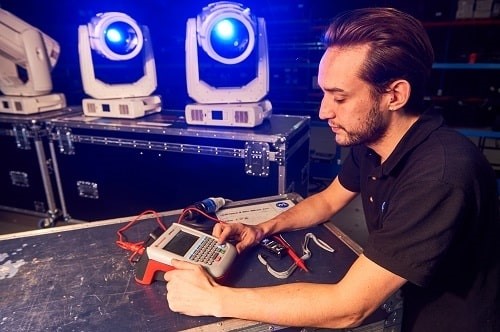Every year many accidents are reported at work involving electricity. Portable appliance testing (PAT) can help employers remain compliant and keep their workplaces safe.
Features
Don’t get your fingers burned
Faulty electrics can cause damage to properties, severely injure people and, in some extreme cases, cause burns or explosions, which could prove fatal. Even non-fatal electric shocks could cause falls from ladders, scaffolds or other work platforms, which in turn could cause permanent injury.
Even those not regularly coming into contact with or working with electricity, such as those working in retail or offices, could be at risk. Poorly installed electrical cables, overloading sockets or damaged appliances could easily cause fire or explosion and potentially endanger whole businesses.
Most of these accidents however can be easily avoided through careful planning, risk assessment and the regular maintenance of electrical equipment and installations.
 PAT testing, as it is known, ensures that the electrical appliances are safe for continued use. Photograph: Seaward
PAT testing, as it is known, ensures that the electrical appliances are safe for continued use. Photograph: Seaward
What the law says?
The law requires that all landlords, employers and even self-employed individuals make sure that their electrical appliances are safe, suitable and used for their intended purpose. The regulations related to this, including: The Health and Safety at Work Act 1974, the Electricity at Work Regulations 1989, the Provision and Use of Work Equipment Regulations 1998, the Management of Health and Safety at Work Regulations 1999, the Workplace (Health, Safety and Welfare) Regulations 1992, the Housing Act 2004 (England and Wales) and the Housing Act 2014 (Scotland).
Compliance
Portable appliance testing (PAT) has become a fundamental requirement for ensuring electrical safety in the workplace.
PAT testing is the examination of electrical appliances and equipment to see if maintenance is required and ensure they are safe for continued use. Many electrical safety defects can be found by visual examination, but some types of defect can only be found by carrying out testing.
Testing and maintenance
Any person carrying out electrical safety checks should be competent to do so with equipment that is fit for purpose and within calibration, to ensure the validity of the results obtained from the testing process etc.
If you have suitable resource and expertise within the company, you can carry out the PAT testing in house. However, if that’s not the case, it is worth employing a contractor to carry out the testing for you.
As with any contractor you employ, it is important to carry out checks on competence, risk assessments, insurances, method statements etc. ahead of commencing work.
Darren Bakewell is electrical safety expert and applications engineer at Seaward Electronic
FEATURES

Sedentary working and how to combat the ‘sitting disease’
By Gavin Bradley, Active Working on 05 April 2024
Prolonged and excessive sitting poses a major risk to our health, but the Get Britain Standing campaign and On Your Feet Britain Day on 25 April are a great way of encouraging workers to sit less and move more.

Company culture and wellbeing: a crucial link
By Bex Moorhouse, Invigorate Spaces on 05 April 2024
Investing in measures to support worker wellbeing will be ineffective unless the company culture genuinely incorporates values like teamwork, involvement, flexibility and innovation.

Office design and culture: happier and healthier staff – or the opposite?
By Guy Osmond, Osmond Ergonomics on 03 April 2024
Applying ergonomic principles to workstation set-ups and ensuring the physical environment supports neurodivergent people are just some of the ways of creating an office where everyone can thrive, but a supportive and positive organisational culture is vital too.


